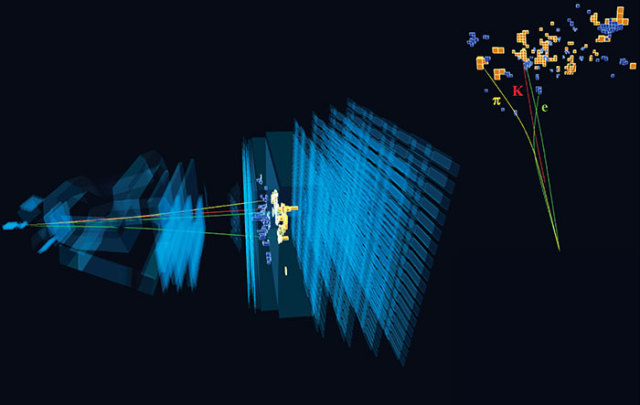
Under the Standard Model, the three charged leptons (electron, muon, tau) are distinguished by different masses, but they have exactly the same sensitivity to fundamental interactions. This property is called "lepton universality".
The LHCb collaboration recently published a result comparing the probabilities of B+➝K+μ+μ- et B+➝K+e+e-. According to the Standard Model, the ratio RK of these probabilities should be equal to 1 because of the lepton universality. However, the measurement of LHCb, RK=0,846+0,044-0,041, departs from this value at 3.1σ and provides the first evidence of a violation of lepton universality. This result continues an experimental and theoretical program started by the BaBar and Belle experiments and continued by LHCb and Belle II.
If this measurement supports other, less marked deviations already observed in other B-meson decays, measurements are needed to confirm or invalidate these results. The LHCb team (PHE Pole) is involved in the study of B0➝K*0𝓁+𝓁- ou Λb➝pK+𝓁+𝓁- (𝓁=e/μ) which compare electrons and muons, as well as semi-leptonic decays which compare taus and muons. The Belle II team is also present on these themes by using decays with taus leptons. Finally, several members of the Theory Pole are working on these decays to improve the predictions of the Standard Model, propose new measurements and interpret the results in terms of physics beyond the Standard Model.
More statistics will be needed to conclude on the violation of lepton universality. It will be available with the LHCb upgrade in 2022 and with full-brightness operation of Belle II in the coming years. The RK measurement is based on the LHCb electromagnetic calorimeter, for which IJCLab has made a major contribution. A second upgrade phase, at very high luminosity and which will require a new calorimeter, is under discussion.
To know more: The collaboration website.























